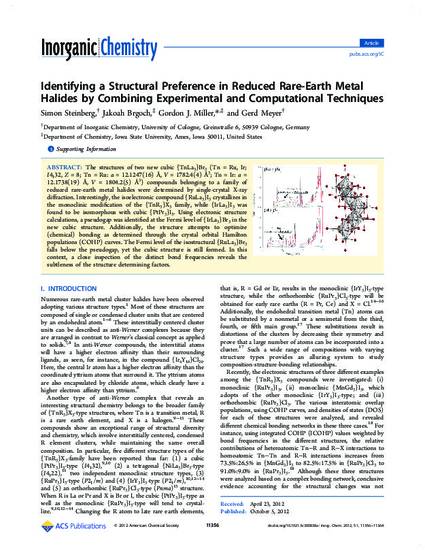
The structures of two new cubic {TnLa3}Br3 (Tn = Ru, Ir; I4132, Z = 8; Tn = Ru: a = 12.1247(16) Å, V = 1782.4(4) Å3; Tn = Ir: a = 12.1738(19) Å, V = 1804.2(5) Å3) compounds belonging to a family of reduced rare-earth metal halides were determined by single-crystal X-ray diffraction. Interestingly, the isoelectronic compound {RuLa3}I3 crystallizes in the monoclinic modification of the {TnR3}X3 family, while {IrLa3}I3 was found to be isomorphous with cubic {PtPr3}I3. Using electronic structure calculations, a pseudogap was identified at the Fermi level of {IrLa3}Br3 in the new cubic structure. Additionally, the structure attempts to optimize (chemical) bonding as determined through the crystal orbital Hamilton populations (COHP) curves. The Fermi level of the isostructural {RuLa3}Br3 falls below the pseudogap, yet the cubic structure is still formed. In this context, a close inspection of the distinct bond frequencies reveals the subtleness of the structure determining factors.
Available at: http://works.bepress.com/gerd-meyer/4/

Reprinted (adapted) with permission from Inorg. Chem., 2012, 51 (21), pp 11356–11364. Copyright 2012 American Chemical Society.